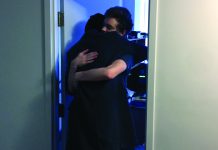
Michelle Przedborski, a Department of Applied Mathematics postdoctoral fellow, determined a way to use math to treat cancer and prevent relapse.
Supervised by Mohammed Kohandel, a Faculty of Mathematics professor, Przedborski created a model that can be used to study how the immune system interacts with different types of cancer cells.
This mathematical model allowed the researchers to determine that the administration of different cancer therapies in specific sequences could better target cancer stem cells in tumors, which can possibly lead to more personalized cancer treatments for individual patients.
These personalized treatments eradicating stem cells may lead to a more long-lasting treatment, preventing relapse. The researchers conducted there study by calibrating the model with experimental data from studies on tumor growth and immunotherapy treatments.
This calibration was then used to simulate the effects of chemotherapy along with a combination of immunotherapy.
This allowed the researcher to predict the most effective combination of cancer treatment.
Last month, UWaterloo graduate students Jason L. Deglint and Ibrahim Ben Daya collaborated with Chris Dulhanty, and Alexander Wong, a Canada Research Chair in Artificial Intelligence and Medical Imaging, to develop a complex tool that uses artificial intelligence (AI) to weed out false information from social media platforms and news websites.
These graduate students were prompted to develop such a tool due to the excessive inflation of fake news online in posts and news stories, especially those concocted for political or economic gain.
This tool uses a deep-learning algorithm that is accurate 90 percent of the time.
The algorithm was first exposed to multiple claims paired with stories that either supported the claim or did not, this allowed the AI to eventually learn to differentiate between true stories and false.
Using this learned behavior the tool determines the truth behind online news by fact checking against stories and post on the same subject.
During the last month, the researchers presented their project at the Conference on Neural Information Processing Systems in Vancouver.
Rogers Communications has finally released the next level for mobile network, 5G.
This mobile network has speeds of upto ten to 20 times that of current networks.
The goal is to eventually be spread throughout Ontario, but for now it will be restricted to the UWaterloo campus.
The 5G network is being set up on the UWaterloo campus to test out the network infrastructure, frequencies and applications in a practical setting, to see how it would work in the real world.
Furthermore, the partnership will also look at the engineering, design, applied math and artificial intelligence aspects in the 5G technology.
This engineering focus at UWaterloo plays to its strength with Rogers chief executive Joe Natale being an electrical engineering alumni.
Moreover, according to Sanjeev Gill, UWaterloo’s associate vice-president of innovation, this technology will also focus on areas such as medical imaging and advanced manufacturing to determine how quickly the data can be transmitted over the 5G tech.






























